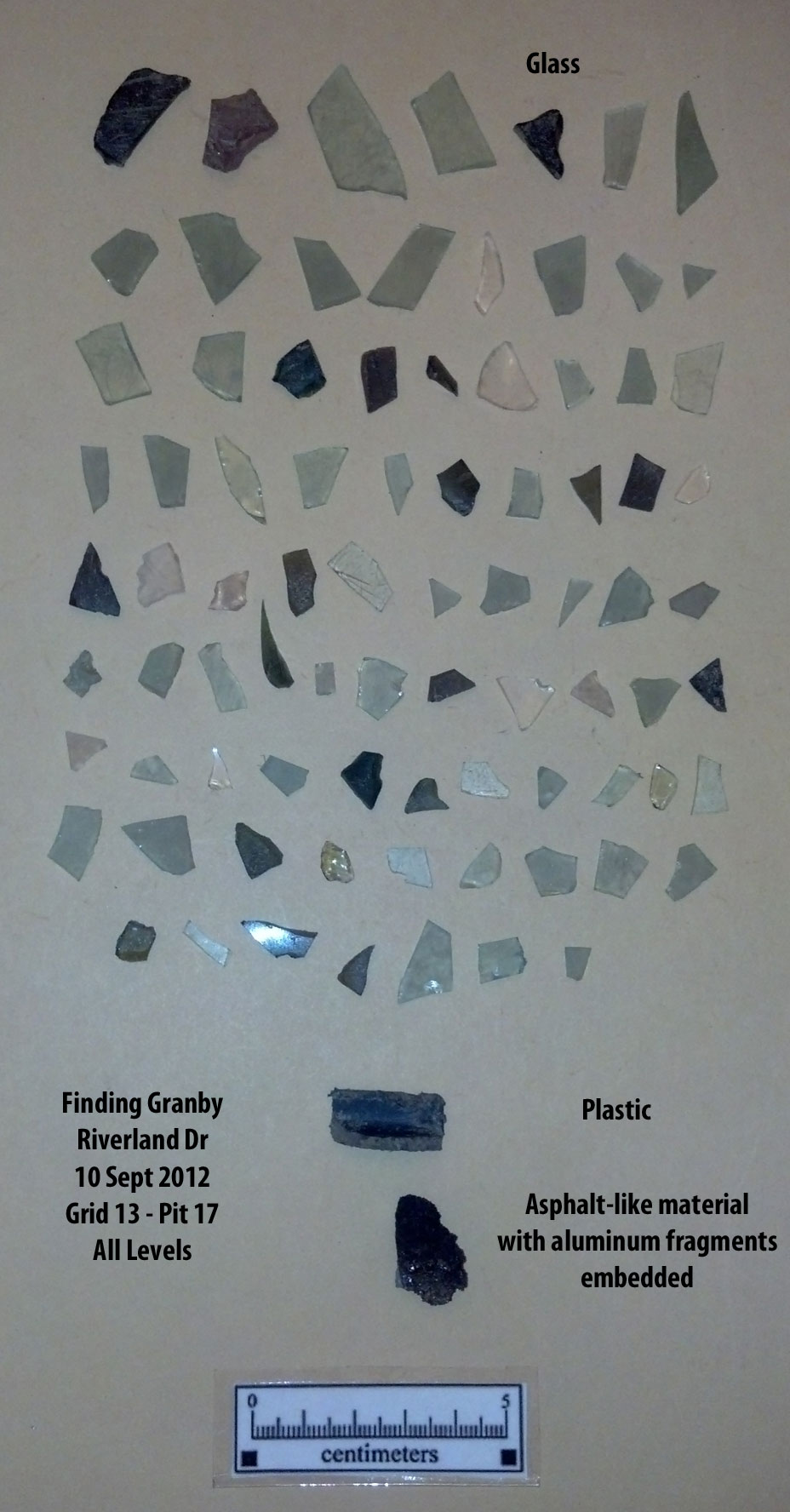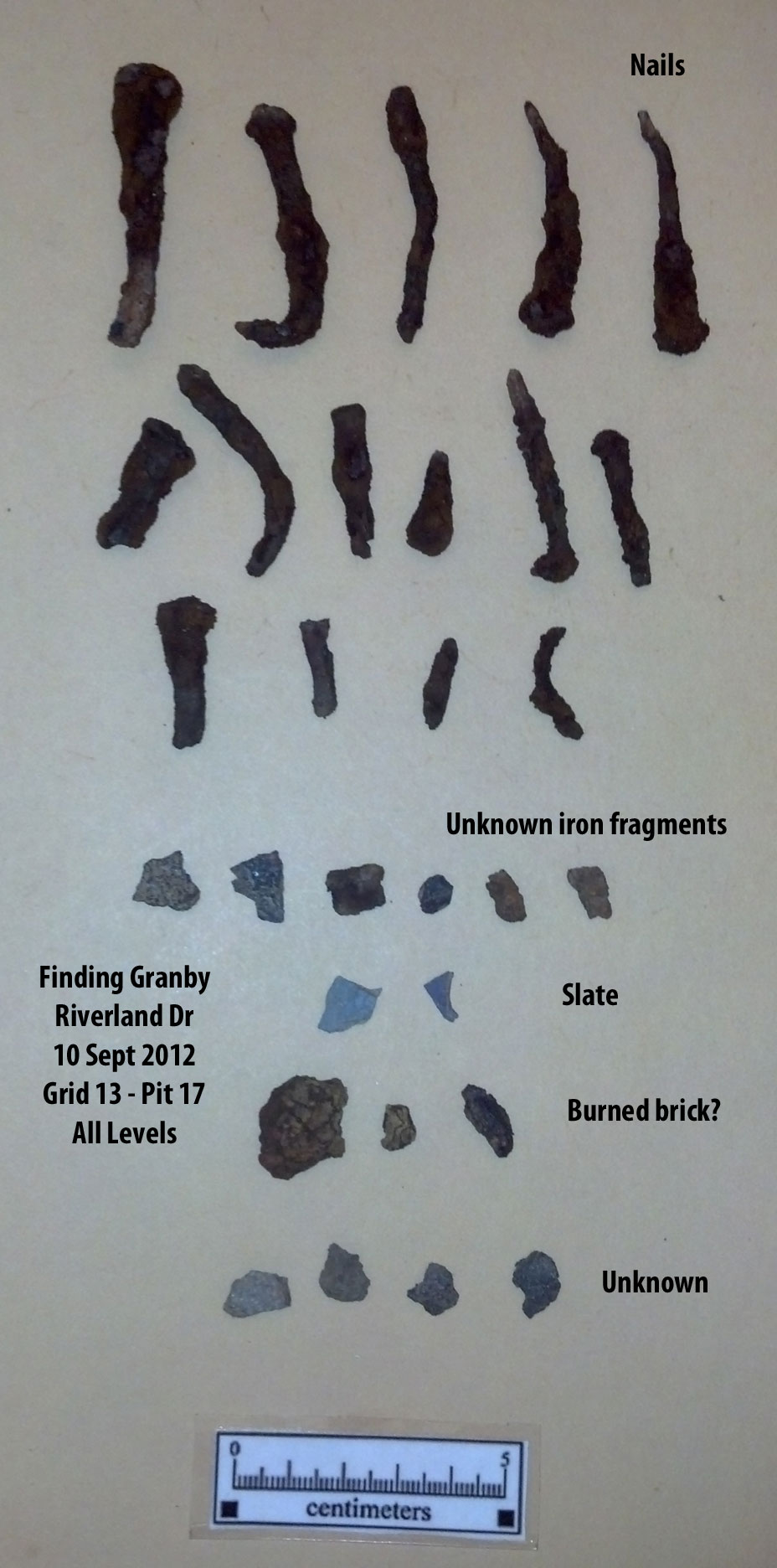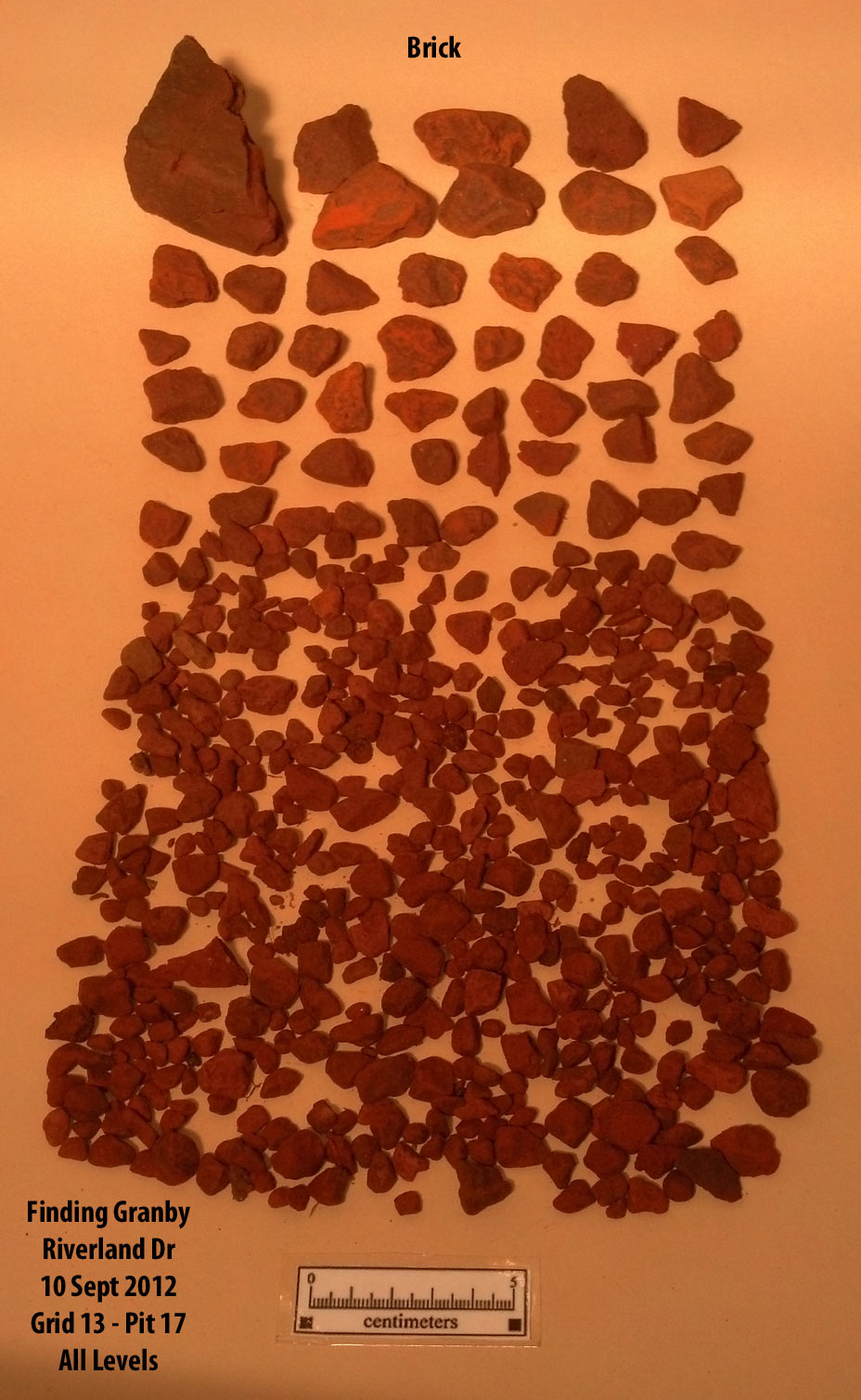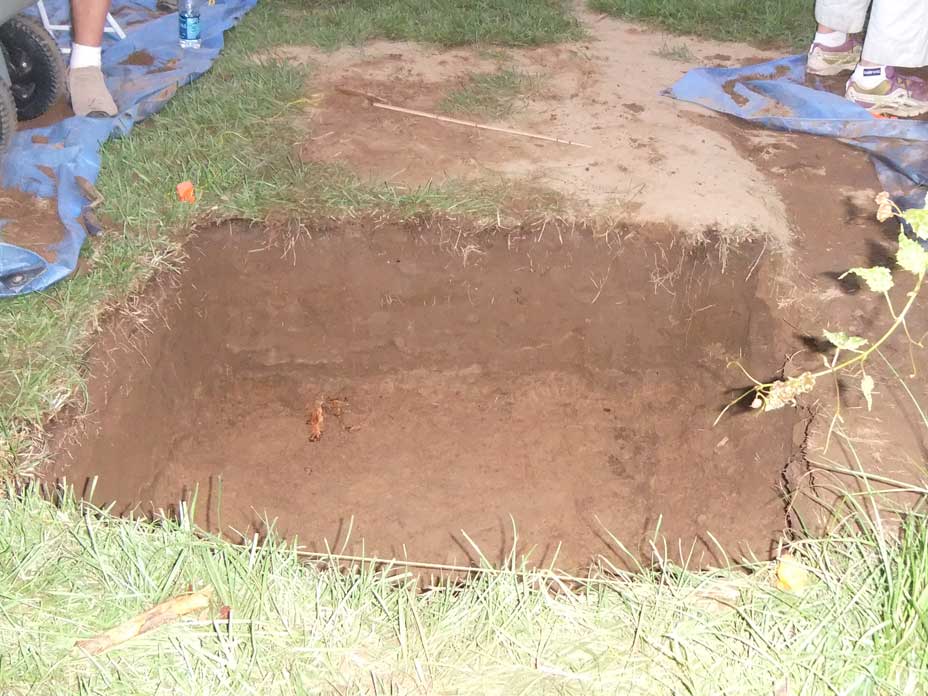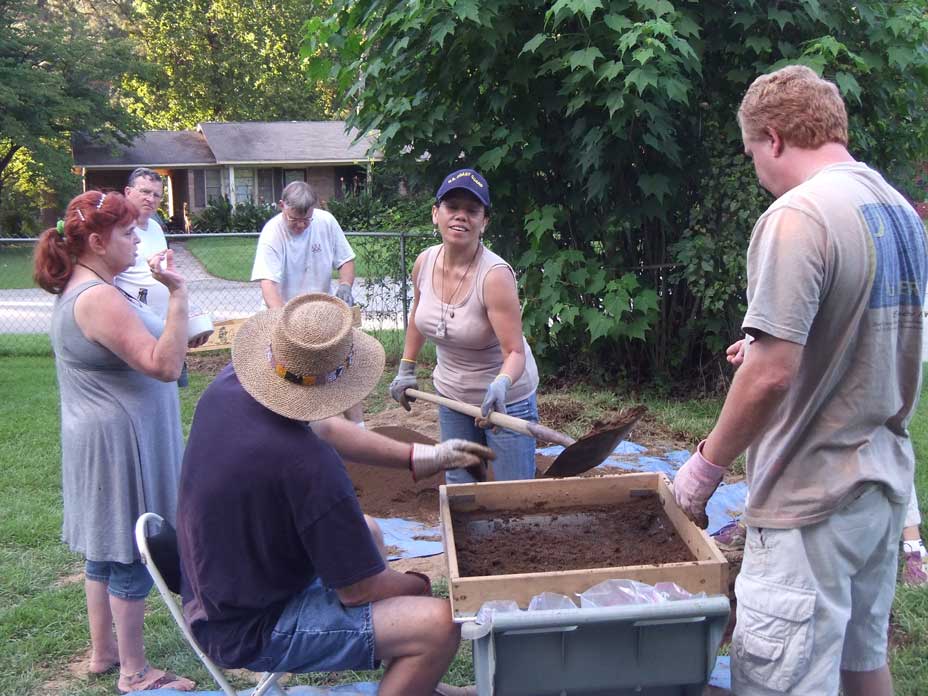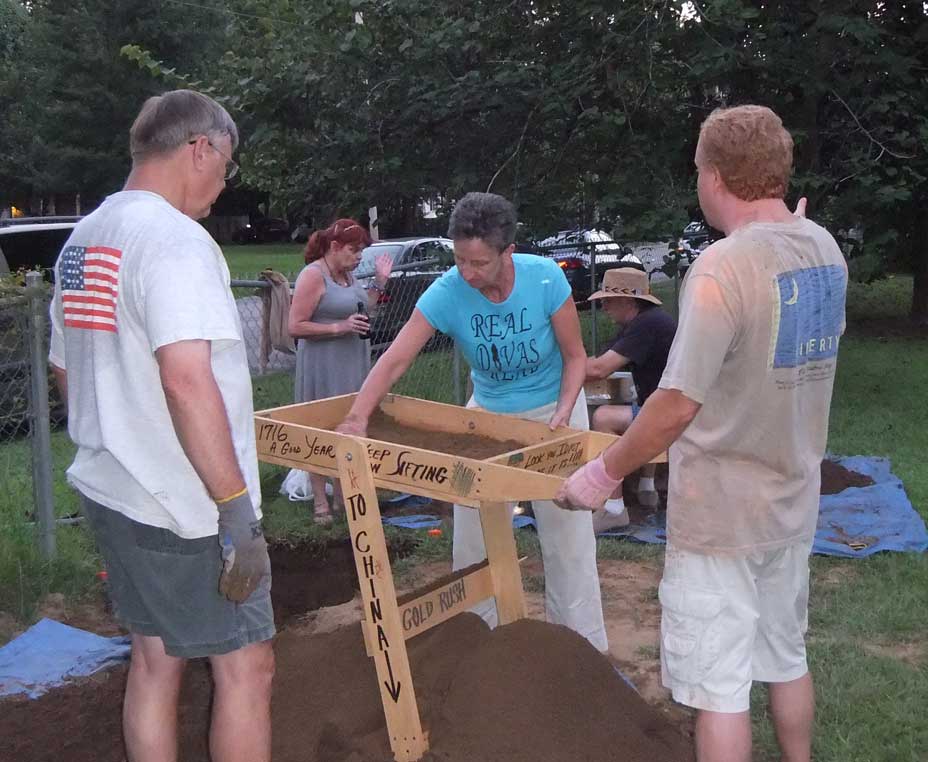Pit 17: Level 1-3
Completed all levels on Sept 10, 2012. Art Coogler and David Brinkman started the pit at 5PM. Art is a real pro at nicely cutting and saving the grass. As Fred Morrison, Debbie Bloom, and DC Locke joined us, we found the first piece of pottery. This was our second Monday night dig so we decided to follow the previous Monday night process and do a single 47cm level so that we could beat the darkness. Jeannie Hatchell (A Scottish Lass who has lived 3 doors down for 30 years) joined us and gave us some local history as well as her own Scottish history. Dean Hunt came in just as we were getting into the meat of the pit. We now had a full team and had two sifting stations going. The pottery, glass, and brick starting pouring out. Debra made a great pipe find. Unannounced to the group, Odess found what may be one of the biggest finds of the dig.. a .26"-.27" lead ball, probably a Revolutionary War buck shot that could have been fired at the skirmish at Friday's Ferry where a number of British were killed. The shot has a clear line/rim around it from the mold. Dean will give more details later on the significance of this find. As we finished the pit, everyone had the feeling that this was a good hole.. but, was it the best? A quick count of the pottery seemed to show that it was. We all enjoyed Odess' hot dogs and sauerkraut after the dig. Tuesday, as I cleaned the items, it became clear that this was our best hole. The pottery count beat the record by 62 to 45. The glass count by 82 to 72. 575g of brick is our second best. 5 pieces of pipe were also our second best. There were 15 nails, 6 unknown pieces of iron, and our first Arms item that is clearly from the period of Granby. We just keep doing better with each pit as we move from North to South along the fence. Will this continue in the next pits? We may have already proven what we set out to do in finding evidence of Granby. The rest may just be icing on the cake and we are going to have fun doing it.
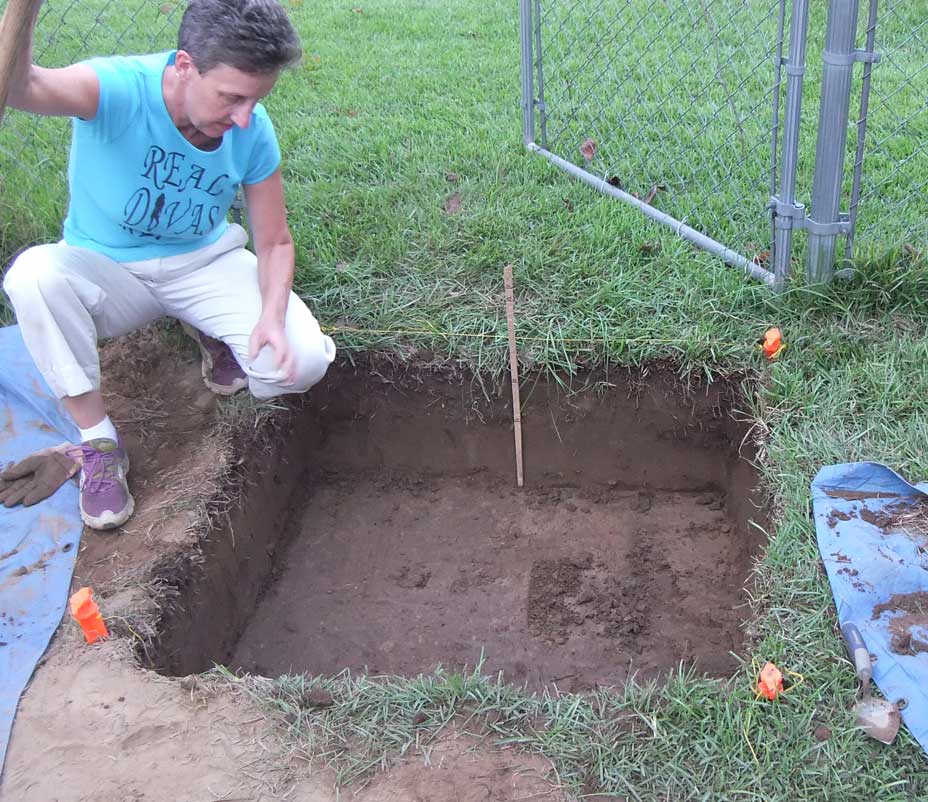
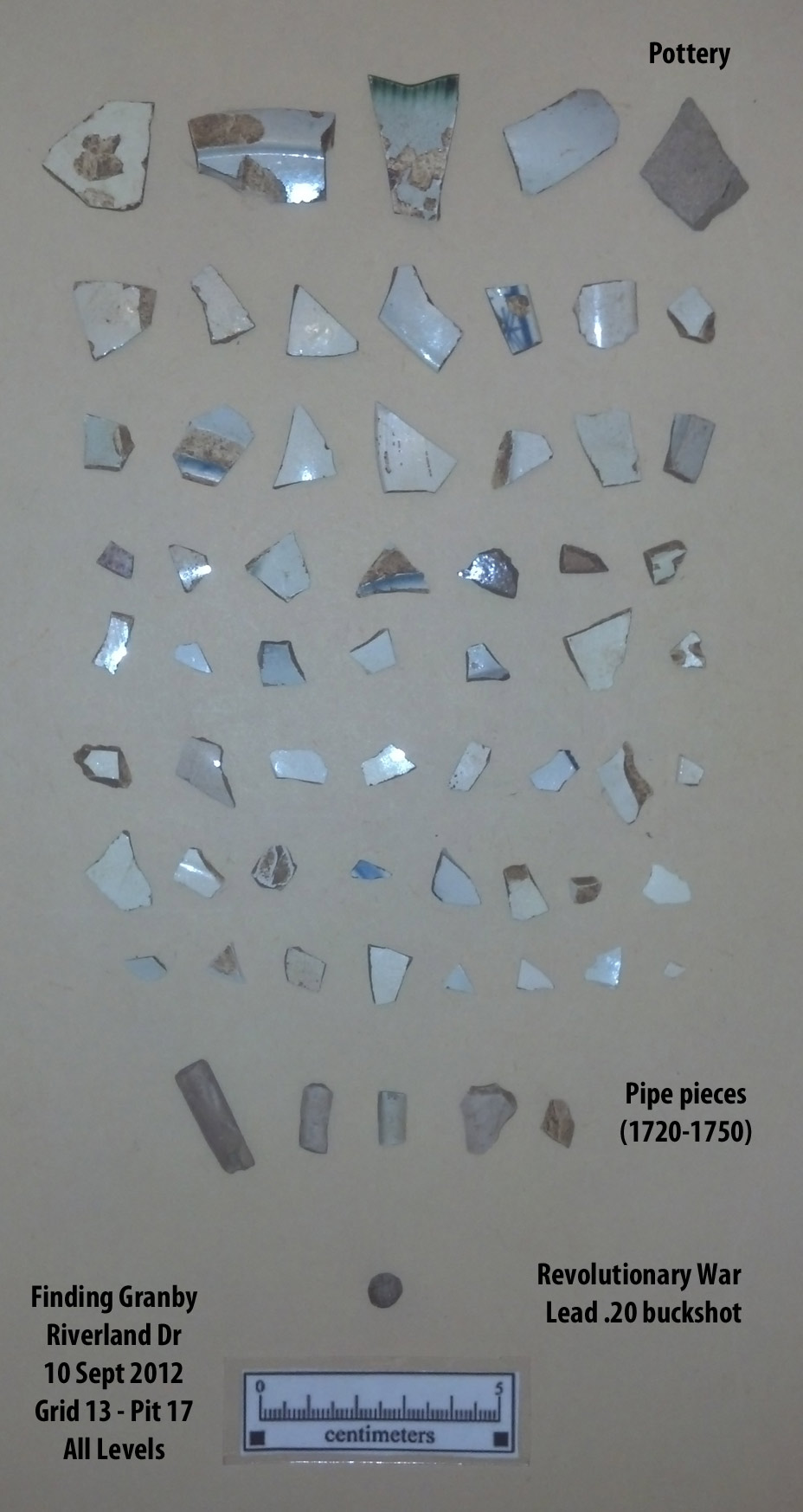
Below is a close-up picture of the buckshot found in Pit 17.
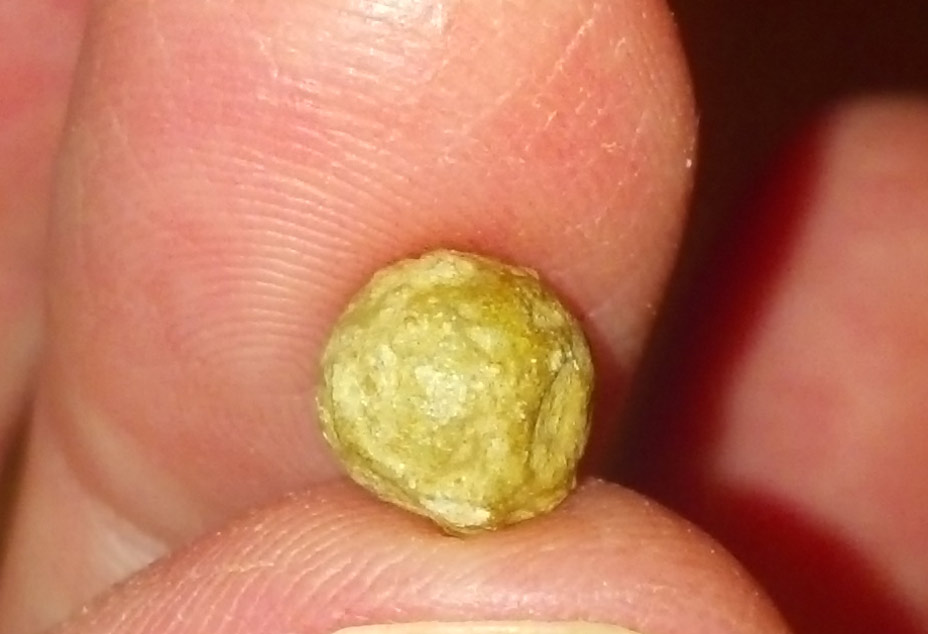
The following link shows you a shot size table at a web site that sell old guns.
http://www.hallowellco.com/shot_size_chart.htm
Measuring our find, you get 1.8 and 1.9 grams so we will assume it's 1.85 grams. This is .0653 ounces. To line this up with shots on this table, you do 1/.0653 to tell you how many lead shots will be in 1 ounce. That gives you 15 (this measurement is in the "Lead Pellets per Oz" column).
That puts us almost exactly between the table's 19 and 11 shots per ounce entries:
#3 BuckSSSGSSG .25" 6.83 19 28
#1 BuckSSG .30" 7.62 11
The diameter of our shot measures just a little over 1/4" at .26 or .27 cal. This is what you would expect because the two above shot sizes (#3 buck and #1 buck) are .25 and .30. So, there's little doubt about this being a lead buck shot. It must be a #2 lead buck shot.
Below is a Revolutionary war era shot mold. The rim and small flat area on our find would have been created by a mold like this.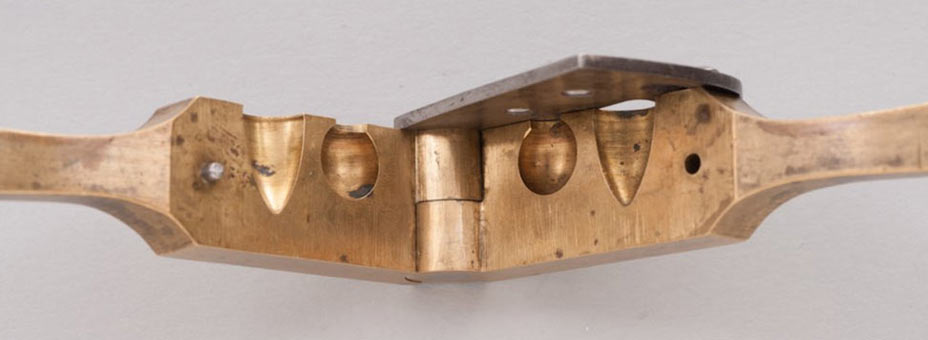
Below are musket balls and buckshot from the Revolutionary war. The next to smallest ball matches the size of Odess' find in Pit 17.

